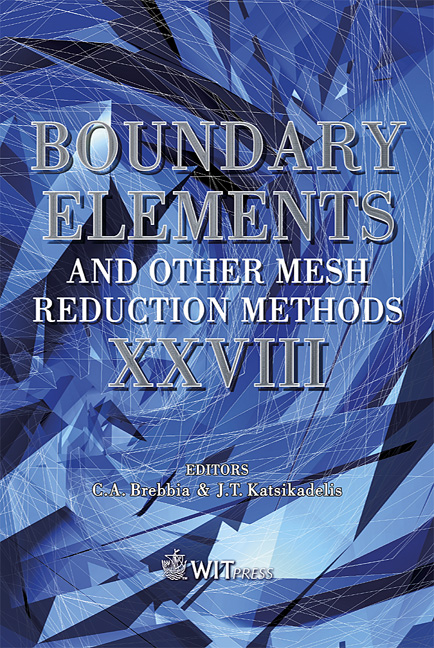A Laplace Transform Boundary Element Solution For The Biharmonic Diffusion Equation
Price
Free (open access)
Transaction
Volume
42
Pages
10
Published
2006
Size
415 kb
Paper DOI
10.2495/BEM060251
Copyright
WIT Press
Author(s)
A. J. Davies & D. Crann
Abstract
The most common diffusion problems involve the description of the diffusive term in terms of the Laplacian operator. Such problems have been solved successfully in a boundary element context using the Laplace transform in time together with a dual reciprocity approach. Some diffusion problems, e.g. heat transfer in certain oceanographic models and slow flow in oil films, have the diffusive term described by the biharmonic operator. Such problems can be written, on the introduction of a secondary dependent variable, as a pair of coupled equations, one of Poissontype and the other of diffusion-type. The Laplace transform together with the dual reciprocity method can be used to solve the resulting pair of coupled equations. Keywords: Laplace transform, boundary elements, dual reciprocity, biharmonic diffusion. 1 Introduction Diffusion problems in which the diffusive operator is Laplacian are welldocumented [1]. For such problems the most common numerical approach to the solution is to use a finite difference time-stepping process. The Laplace transform in time provides an alternative approach. In both cases the parabolic problem is reduced to an elliptic problem in the space variables and any suitable solver may be used. Rizzo and Shippy [2] first used the Laplace transform in conjunction with the boundary integral equation method using an inversion process in terms of a prony series of negative exponentials in time. Stehfest’s method [3, 4], which is much simpler to apply, was used by Moridis and Reddell [5]. The solution is developed directly at one specific time value without the necessity of intermediate values.
Keywords
Laplace transform, boundary elements, dual reciprocity, biharmonic diffusion.





